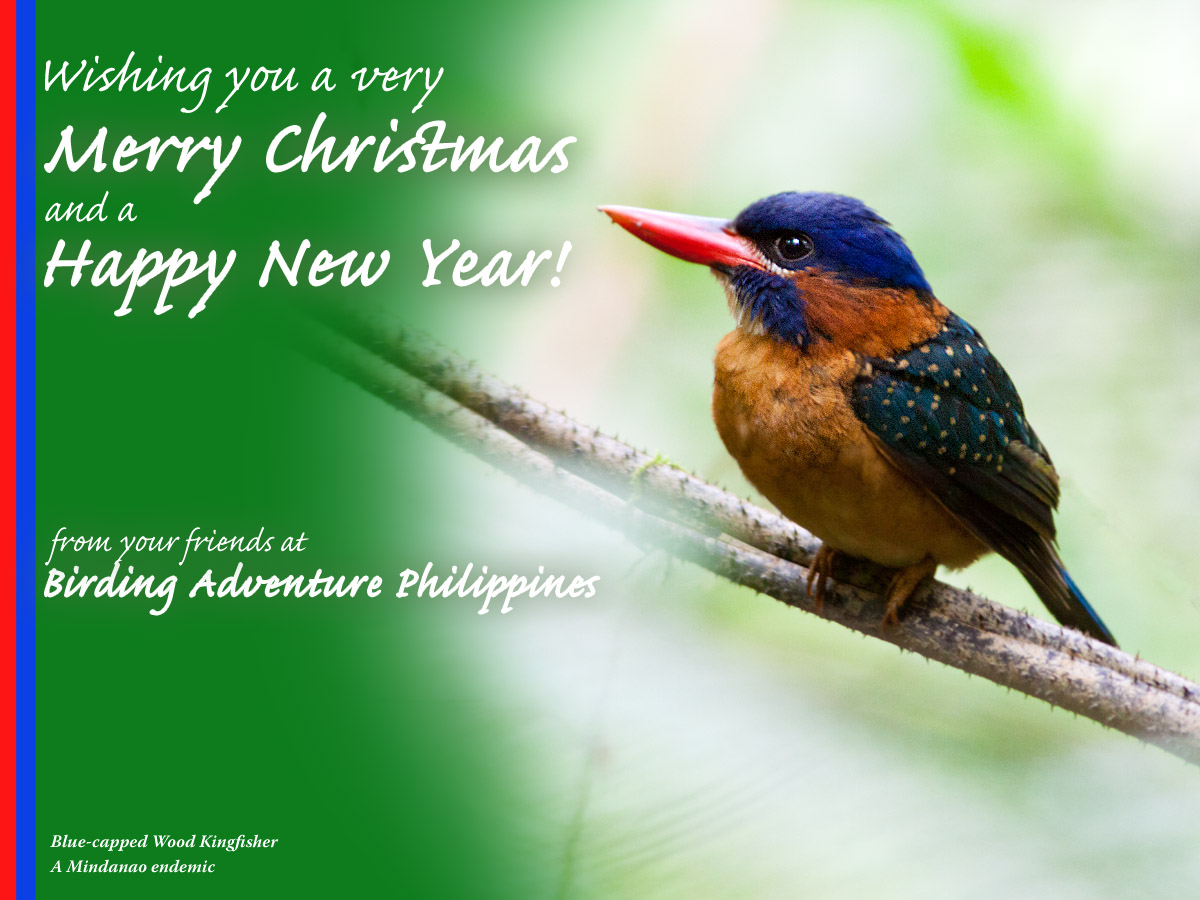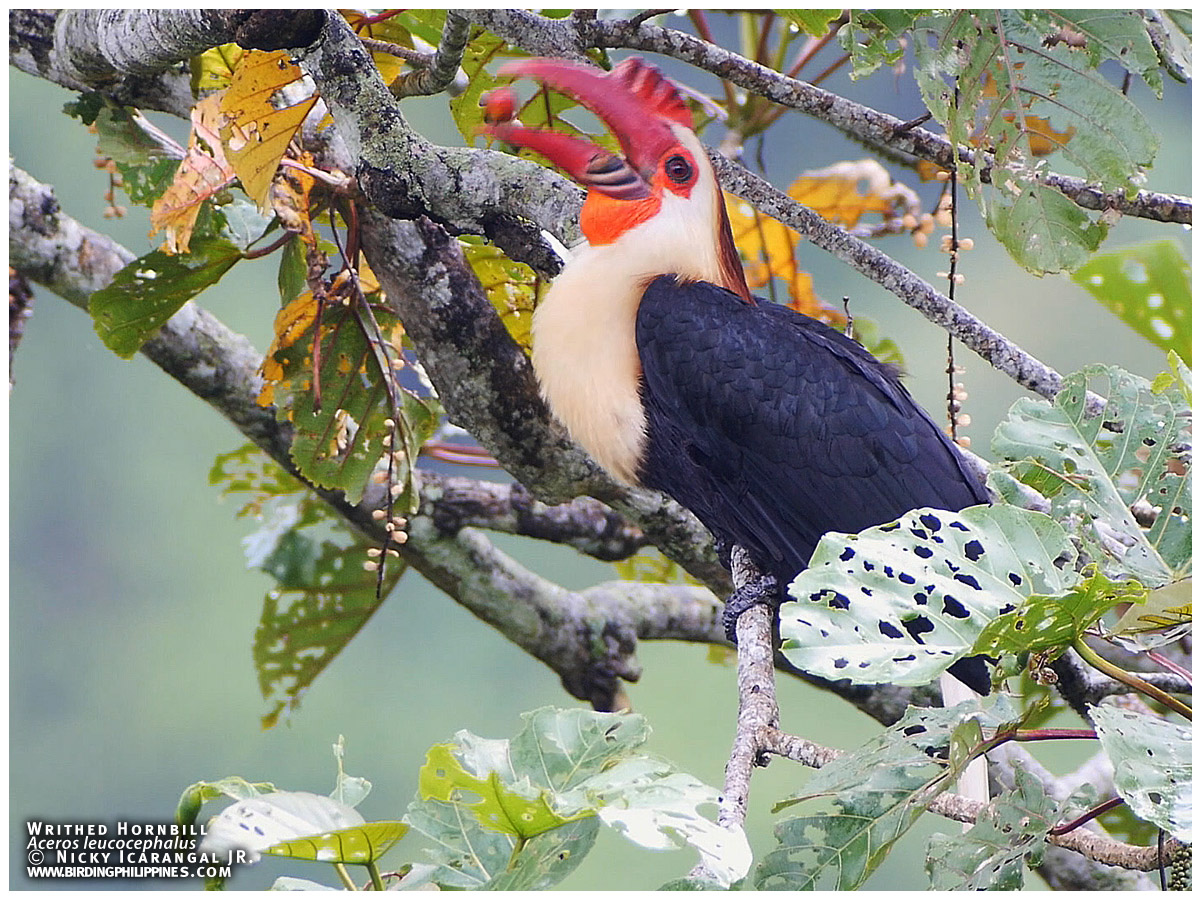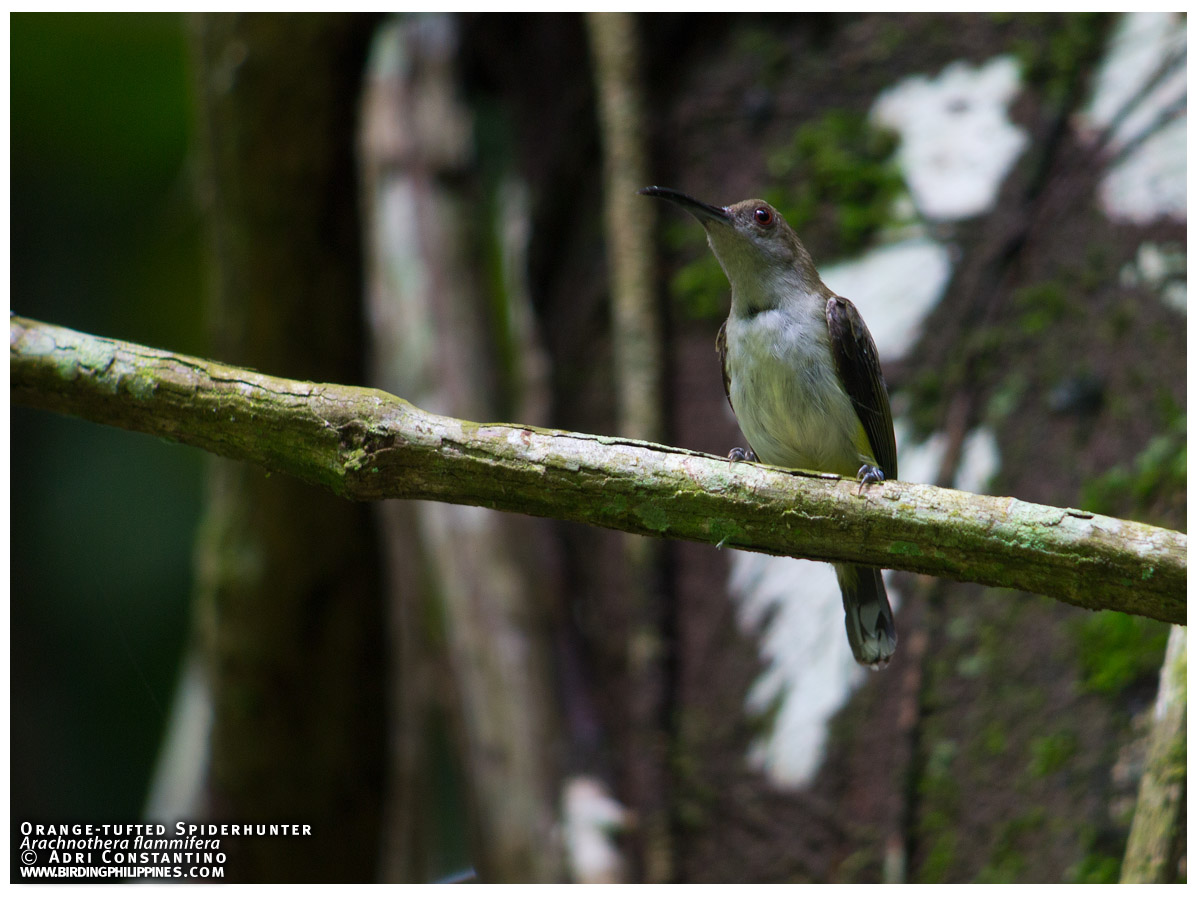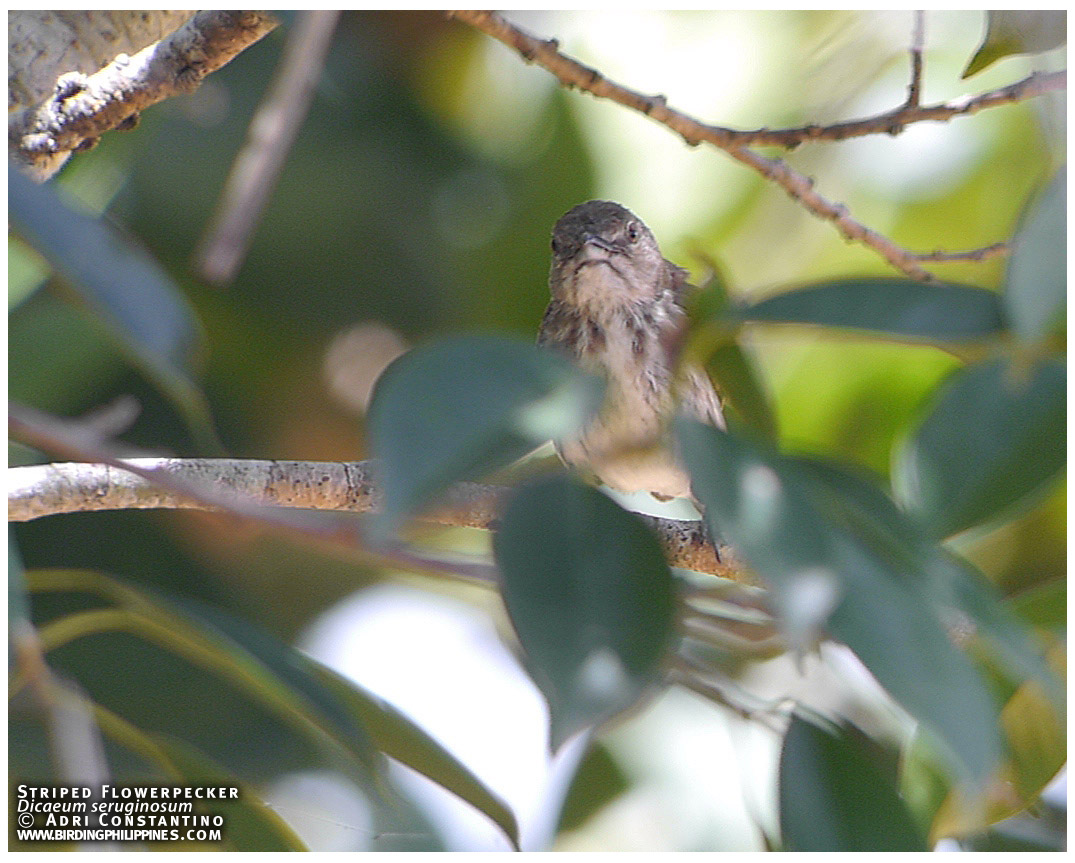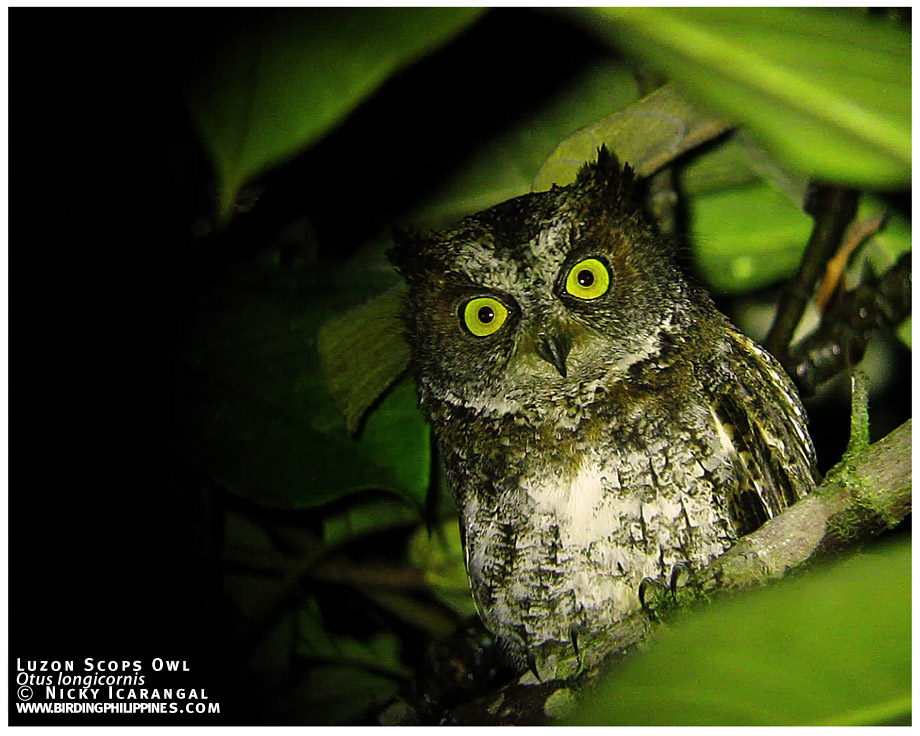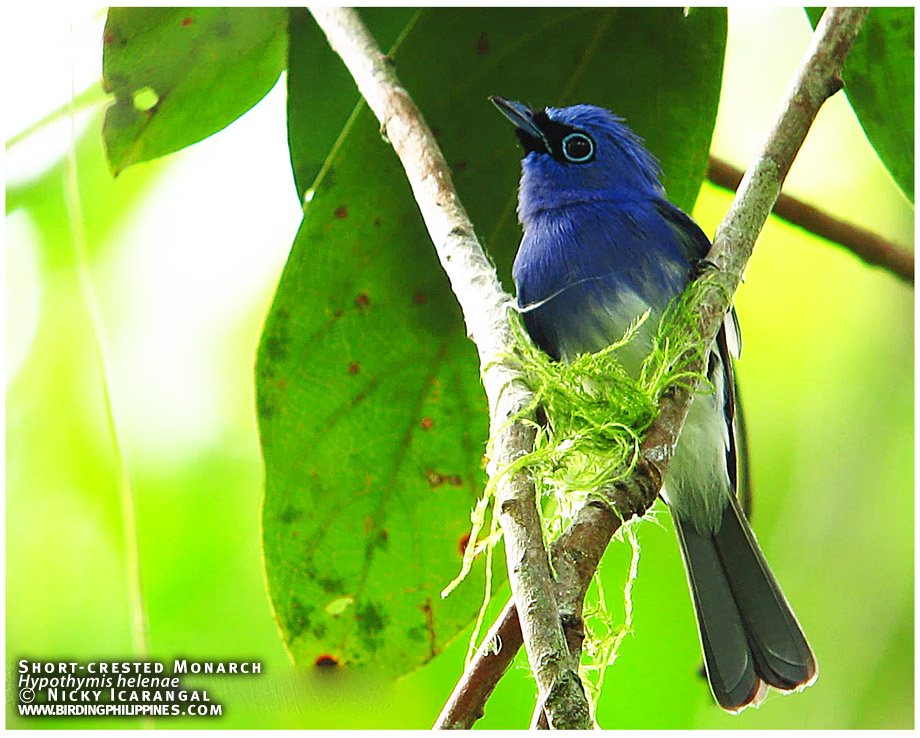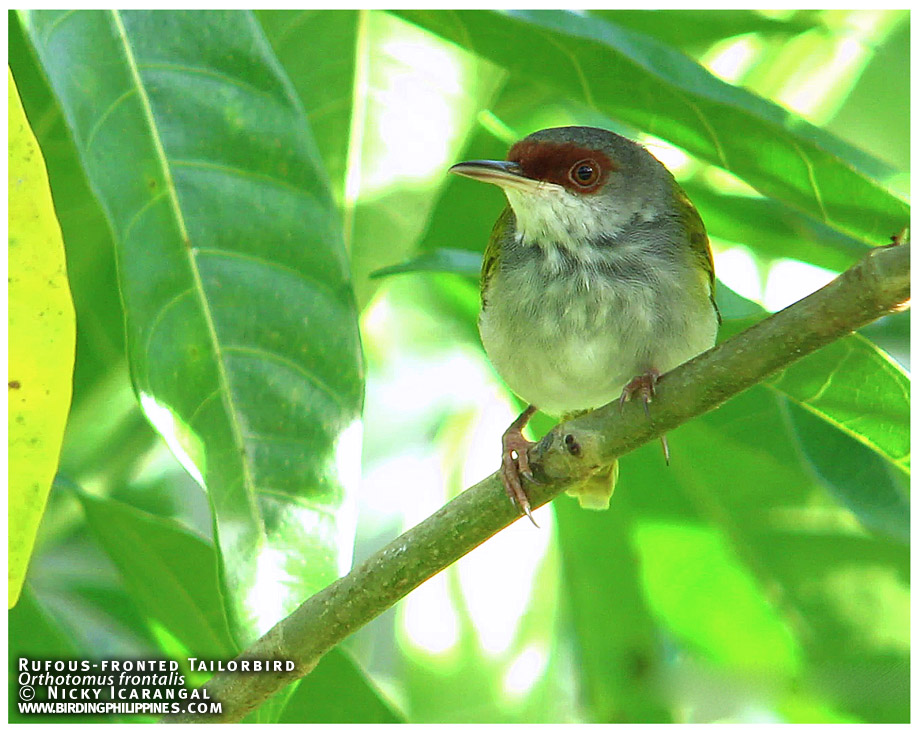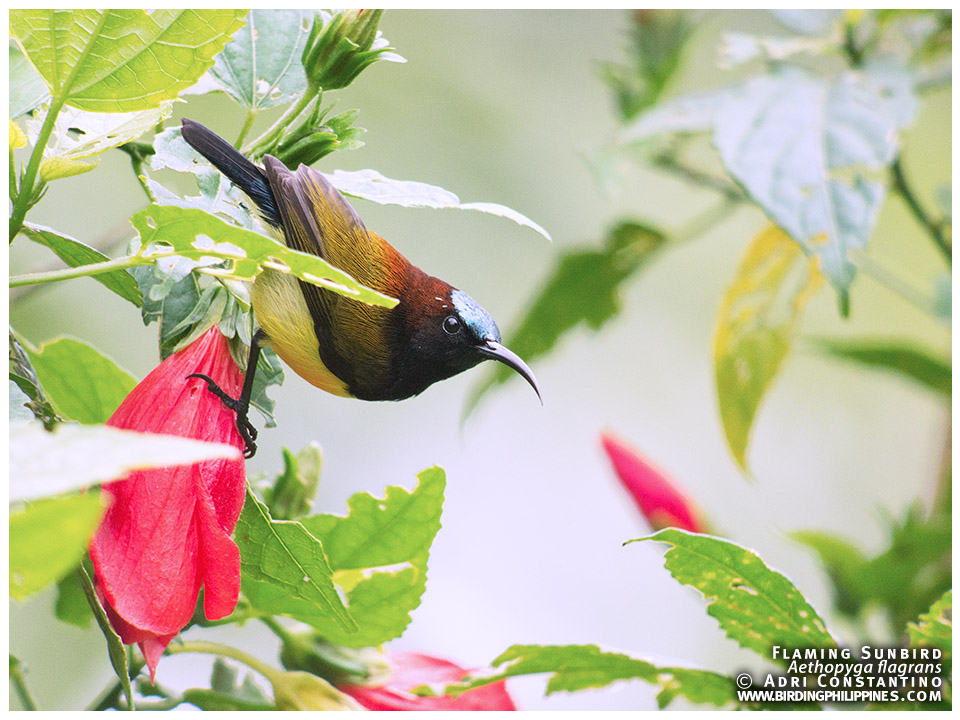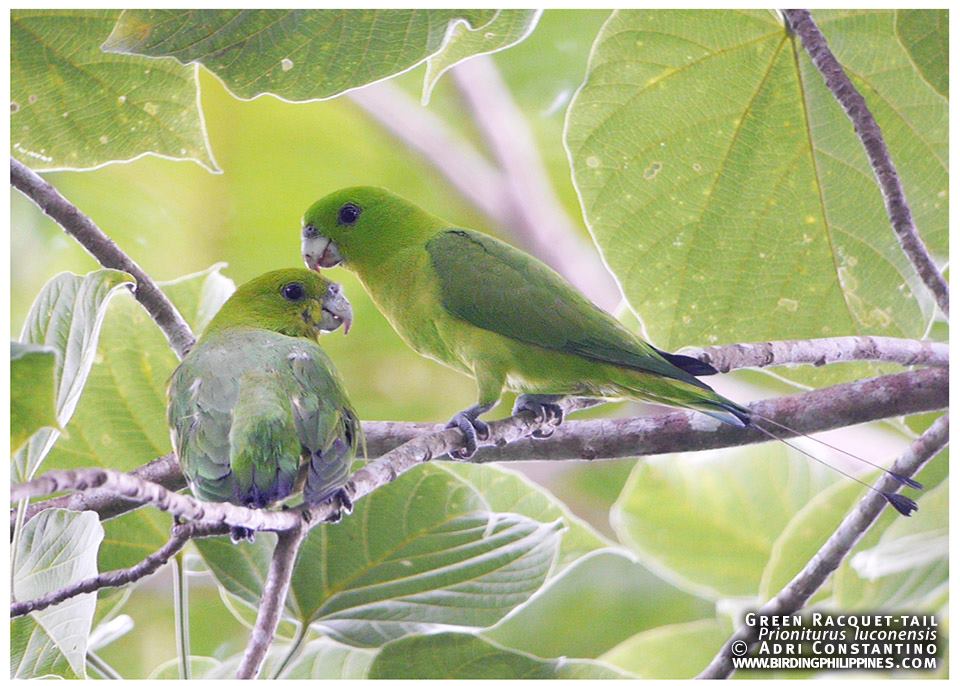Tag: endemic
A regurgitating Writhed Hornbill [HD]
This is a video of a male Writhed Hornbill regurgitating a fig fruit in the slopes of Mt. Apo Natural Park. The Writhed Hornbill is a Mindanao endemic and prefers lowland forests up to 1200 meters. Just like most hornbills, they nest in the cavities of tall trees, enclosing the female hornbill in using mud, while the male hornbill delivers food both to the female and the chicks, cleans the nest, and does other chores. Regurgitation is the major strategy of the male hornbill when feeding a nesting female and chicks enclosed in its nest.
This Writhed Hornbill, plus the majestic Rufous Hornbill and the smaller Mindanao Taricitc Hornbill completes the Mindanao hornbill trio.
Writhed Hornbill, Aceros leucocephalus
March 2014, Mt. Apo Natural Park, Davao, Mindanao, Philippines
Video by Nicky Icarangal, JR.
Digiscoped with a Swarovski 95 STX HD, Panasonic GH3, Swarovski APO-TLS
Orange-tufted Spiderhunter
This is a short video of an Orange-tufted Spiderhunter resting after a few minutes of feeding in the forest canopy. This is a Philippine endemic ranging only in the islands of Mindanao, Bohol, Samar and Leyte and is a recent split from the Little Spiderhunter complex. With the new and updated IOC list, the Orange-tufted Spiderhunter has become one of the three endemic spiderhunters in the Philippines, together with Naked-faced Spiderhunter (endemic to Luzon and Mindanao) and Pale Spiderhunter (endemic to Palawan).
Spiderhunters are omnivorous. As the name implies, they prefer to pluck small spiders from the center of spiderwebs, as well as forage for other small insects such as crickets and butterflies in the forest canopy. Their long, decurved bills together with the long and thin tongue (check it out at around 0:35 into the video) also enable them to drink nectar from flowers, a trait shared with sunbirds, their close relatives.
Orange-tufted Spiderhunter, Arachnothera flammifera
June 2014, Eden Nature Park, Toril, Davao, Mindanao, Philippines
Video by Adrian Constantino
Digiscoped with a Swarovski 80 ATM HD, Panasonic G3, Panasonic 20 mm F1.7, Swarovski UCA
Feeding Striped Flowerpeckers
This is a video of feeding Striped Flowerpeckers, tiny, uncommon, very active birds endemic to the Philippines. They are found in most islands of our archipelago, but the most reliable (and accessible) sites for them are in Mt. Makiling in Laguna and in Puerto Princesa, Palawan. The Striped Flowerpecker looks very similar to a Grey-streaked Flycatcher, but can be easily differentiated by observing their behavior: the Striped Flowerpecker wags its tail from side to side while Grey-streaked Flycatcher prefers to perch on exposed treetops and flies out and returns to the same perch. They are efficient seed dispersal agents (especially mistle-toe, check out how in our posts here.) Some taxonomists lump this species with Thick-billed Flowerpecker, a flowerpecker ranging in other Southeast Asian countries.
Feeding Striped Flowerpeckers, Dicauem aeruginosum
June 2014, Mt. Makiling, Laguna and Kasibu, NUeva Viscaya
Video by Adrian Constantino
Luzon Scops Owl [HD]
Measuring only 7 inches, the Luzon Scops Owl is one of the smallest scops owls in the Philippines. It is found only in the high elevation montane forests of Luzon, above 1000 meters and overlaps with its bigger and more common cousin Philippine Scops Owl.
They have been observed to nest on tree cavities made by woodpeckers. You can hear it giving its characteristic two-syllable whistle in this video.
This is a digiscoped video using a Swarovski 80 ATM HD spotting scope. Imagine what you can do with your DSLR and your 600 or 800 mm lens!
Luzon Scops Owl, Otus longicornis
January 2014, Mt. Polis, Ifugao, Luzon, Philippines
Video by Nicky Icarangal, JR.
Black-hooded Coucal
The Black-hooded Coucal is one of the 6 species of coucals found in the Philippines. It is the Philippines rarest endemic coucal and can only be seen in Mindoro, a small island southwest of mainland Luzon. The field guide describes it as a secretive skulker, and prefers the dense vines and foliage of the lowland forests in Mindoro. The call is a a loud and resonating Hoot hoot hoot hoot hoot similar to that of a Black-faced Coucal, another endemic that ranges only in Mindanao, Samar,Leyte and Bohol.
Birdlife International classifies this bird as "Critically Endangered" as the lowland forests in Mindoro are rapidly disappearing due to illegal logging and slash and burn farming. The best reliable site for this Coucal is in Siburan where some lowland forest is still present within a penal colony and prison farm. Entry to the Siburan Penal Colony is restricted and requires a permit and prior arrangement with the Prison Superintendent.
Black-hooded Coucal, Centropus steerii
February 2014, Siburan, Sablayan, Mindoro Occidental, Philippines
Short-crested Monarch [HD]
Two of the most sought-after birds on any birding trip to the Philippines are our two endemic monarchs, Celestial Monarch and Short-crested Monarch. The Celestial Monarch is definitely a very-good looking bird (see our video here) and is always a candidate for the bird of the trip but others prefer its equally gorgeous cousin: the Short-crested Monarch. To kick off the new birding year, we would like to share our video of a Short-crested Monarch pair starting to build their nest.
Short-crested Monarch, Hypothymis helenae
March 2013, PICOP, Surigao del Sur, Mindanao, Philippines
Rufous-fronted Tailorbird [HD]
The Philippines is one of the countries in the world with very high biodiversity when it comes to tailorbirds. In the new and updated list of the Wild Bird Club of the Philippines, we have 11 tailorbird species, with 8 species endemic to the Philippines. The one featured here is a Rufous-fronted Tailorbird, endemic to the islands of Mindanao, Samar, Leyte, Bohol and satellites.
Rufous-fronted Tailorbird, Orthotomus frontalis
March 2013, PICOP, Surigao del Sur, Mindanao, Philippines
Maroon-naped Sunbirds [HD]
Check out the feather details on these Maroon-naped Sunbirds, Aethopyga guimarasensis digiscoped in Balinsasayao-Danao Twin Lakes during one of our birding tours this year.
The Maroon-naped Sunbird is a Guimaras, Negros and Panay endemic inhabiting the lowlands up to 1350 m. It is characterized by the fiery (thus flaming) orange splashes on its yellow belly. It was a windy and foggy morning when we were digiscoping these sunbirds in Lake Balinsasayao, Negros but the sweet and newly-blossomed hibiscus flowers were so tempting, the active little birds did not mind the wind, the fog and the birders oooh-ing and aaah-ing just a few meters from them.
Maroon-naped Sunbird, Aethopyga guimarasensis
(Formerly Flaming Sunbird, Aethopyga flagrans)
January 2013, Balinsasayao-Danao Twin Lakes, Dumaguete, Negros Oriental, Philippines
Green Racquet-tail feeding its young
Here is a video of a Green Racquet-tail feeding its young in the lowland forests of Subic in Zambales, Luzon. There are six endemic racquet-tail parrots in the Philippines, and the Green Racquet-tail is the smallest. It can only be found in the island of Luzon, with Subic Bay as the most reliable site. Young birds or immatures still lack the characteristic "raqcuets." With their all green plumage, these birds are tough to spot in the canopy.
Like its cousin, the Mindanao Montane Racquet-tail (seen feeding on flowers here), the Green Racquet-tail also has screeching, high pitched calls when perched and when in flight.
Green Racquet-tail feeding its young, Prioniturus luconensis
June 2013, Subic, Zambales, Luzon, Philippines

